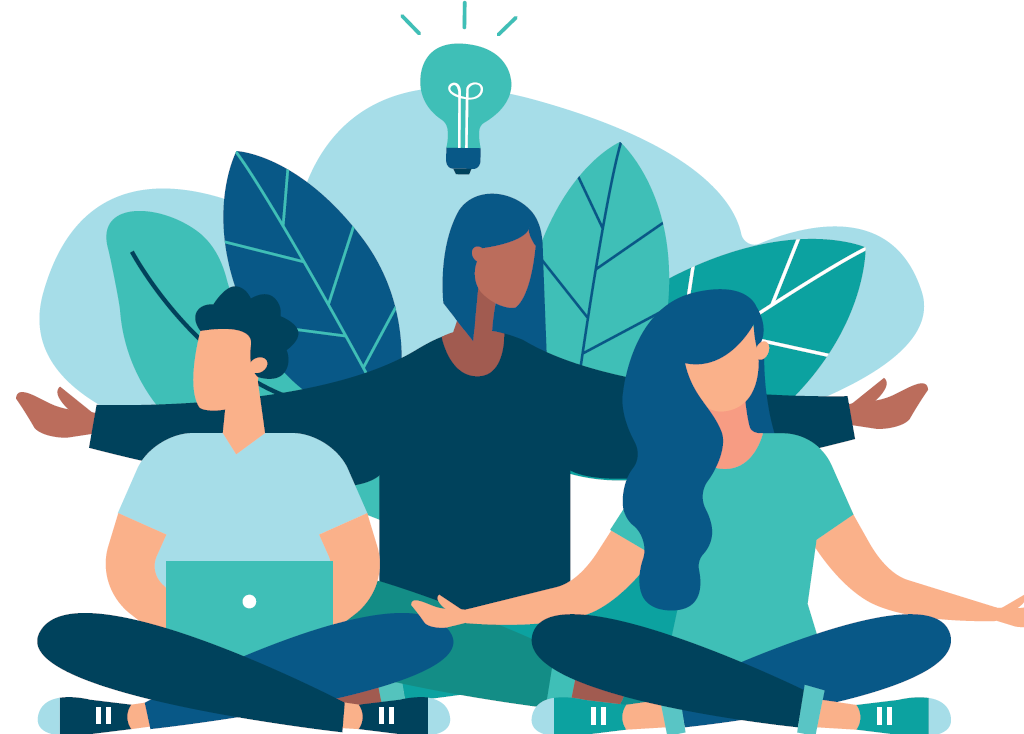
Imagine this: you’re sitting in a cafe, enjoying a cup of coffee. But are you truly present? Or is your mind racing, replaying yesterday’s conversation or worrying about tomorrow’s deadlines? In our fast-paced world, it’s easy to get caught up in the mental whirlwind, neglecting the present moment. That’s where mindfulness comes in – a practice that can be your key to unlocking inner peace and mental well-being.
Art of Mindfulness: More Than Just a Buzzword
Mindfulness isn’t just a trendy hashtag. It’s an ancient practice with roots in Eastern philosophies, gaining traction in the West for its profound impact on mental health. Simply put, mindfulness is the art of paying attention to the present moment, without judgment. It’s about becoming aware of your thoughts, feelings, and bodily sensations in a non-reactive way.
Think of your mind as a cluttered room. Mindfulness is like decluttering – observing your thoughts without getting tangled up in them. You acknowledge them, then gently let them go, returning your focus to the present moment.
Why Mindfulness Matters: The Benefits of Being Present
So why should you bother with mindfulness? The benefits are vast and well-documented. Here are just a few ways mindfulness can enhance your life:
- Reduced Stress and Anxiety: Mindfulness acts as a buffer against everyday stressors. By anchoring yourself in the present, you become less reactive to anxious thoughts and worries.
- Improved Focus and Concentration: In a world filled with distractions, mindfulness helps you train your attention, allowing you to focus better on tasks and avoid getting overwhelmed.
- Enhanced Emotional Regulation: Mindfulness equips you to observe your emotions with awareness instead of getting swept away by them. This leads to a greater sense of control over your emotional responses.
- Increased Self-Awareness: By becoming more mindful of your thoughts and feelings, you gain a deeper understanding of yourself, your triggers, and what truly matters to you.
- Improved Well-being: Mindfulness practices have been shown to promote better sleep, increased self-compassion, and a more positive outlook on life.
Let me share a personal anecdote. I used to be a chronic worrier. My mind would constantly replay past events or jump ahead to future anxieties. Through mindfulness practices like meditation, I learned to observe my worries without judgment and gently redirect my attention to the present. The result? A calmer, more focused, and overall happier me.
Getting Started with Mindfulness: Simple Practices for a Busy Life
The beauty of mindfulness is that it’s accessible to everyone, regardless of background or experience. Here are some easy practices you can incorporate into your daily routine:
- Mindful Breathing: This is the foundation of mindfulness. Take a few minutes to sit comfortably and focus on your breath. Feel your chest rise and fall with each inhale and exhale. When your mind wanders (as it inevitably will), gently bring your attention back to your breath.
- The Body Scan: This practice encourages you to tune into your bodily sensations. Lie down or sit comfortably and scan your body from head to toe, noticing any areas of tension or discomfort. Observe these sensations without judgment and allow them to soften.
- Mindful Walking: Turn your daily walks into a mindfulness practice. Pay attention to the feeling of your feet on the ground, the sound of your breath, and the sights and sounds around you.
- Mindful Eating: In our fast-paced world, we often mindlessly eat while distracted. Try eating slowly, savoring each bite, and paying attention to the taste, texture, and aroma of your food.
- The 5-Minute Mindfulness Challenge: Feeling overwhelmed? Take a quick 5-minute break. Sit comfortably, close your eyes, and focus on your senses. What do you hear? Smell? Feel? This simple practice can anchor you back to the present and offer a much-needed mental break.
Remember, mindfulness is a journey, not a destination. There will be days when your mind wanders.

Art of Mindfulness Beyond Meditation: Cultivating Presence Throughout Your Day
Mindfulness isn’t confined to formal meditation practices. It’s a way of being that can be integrated into your daily life. Here are some tips:
- Mindful Mornings: Start your day with a few minutes of mindful breathing or meditation. This sets the tone for a calmer and more focused day.
- Tech Detox: Schedule breaks from your phone and computer. Take a walk in nature, listen to your favorite music, or simply observe your surroundings – all without digital distractions.
- Mindful Communication: When interacting with others, truly listen to what they’re saying. Be present in the conversation, avoiding multitasking or letting your mind wander.
- The Power of Gratitude: Take time each day to appreciate the good things in your life, no matter how small. This fosters a sense of gratitude and contentment.
- Mindful Movement: Exercise can be a powerful mindfulness practice. Whether it’s yoga, running, or dancing, focus on the sensations in your body and the rhythm of your breath.
These seemingly small acts of mindful awareness can have a profound impact on your overall well-being. By incorporating these practices into your daily routine, you can cultivate greater inner peace and navigate the complexities of life with a sense of calm and focus.
Read Similar Posts
- The Invisible Majority: Unveiling the Fascinating World of Microbes
- Savor Every Bite: The Transformative Power of Mindful Eating
- The Future of Space Exploration: A Celestial Odyssey Awaits
Conclusion: Mindfulness: A Journey to Inner Peace
Mindfulness isn’t about achieving some state of zen perfection. It’s about cultivating a kinder, more present way of being. It’s about acknowledging the whirlwind of our thoughts and emotions without getting swept away by them.
In a world that constantly demands our attention, mindfulness offers a much-needed refuge. It allows us to step back, breathe, and reconnect with ourselves. It’s a journey to inner peace, one mindful breath at a time. So, are you ready to embark on this transformative journey?
Art of Mindfulness FAQs: Your Questions Answered
FAQ 1: Is meditation the only way to practice mindfulness?
While meditation is a great mindfulness practice, it’s not the only one. The key is to cultivate awareness throughout your day. Simple acts like mindful eating, walking, or listening can be powerful mindfulness tools.
FAQ 2: What if I find it difficult to quiet my mind?
A wandering mind is perfectly normal! The goal of mindfulness isn’t to achieve a blank state but to observe your thoughts without judgment. With practice, you’ll get better at gently redirecting your attention.
FAQ 3: How long do I need to practice mindfulness to see results?
Everyone’s journey is different. However, even a few minutes of daily mindfulness practice can lead to noticeable improvements in focus, stress management, and overall well-being.
FAQ 4: Are there any apps or resources that can help me with mindfulness?
There are numerous mindfulness apps and online resources available. These can be helpful for guided meditations, mindfulness exercises, and tips for integrating mindfulness into your daily routine.
FAQ 5:Where can I find more information on Mindfulness?
Several books and websites offer in-depth information on mindfulness practices. Consider browsing libraries or bookstores for mindfulness guides, or explore reputable online resources like Mindful.org (https://greatergood.berkeley.edu/topic/mindfulness) or the National Center for Complementary and Integrative Health (.gov) website.
Mindfulness is a practice that’s open to everyone. With a little effort and dedication, you can cultivate greater presence, inner peace, and a more mindful way of navigating the complexities of life. So, take a deep breath, begin your mindfulness journey, and discover the transformative power of being present in the now.

